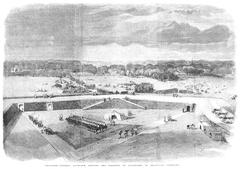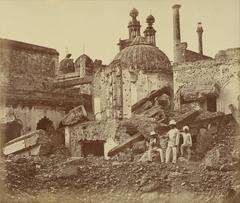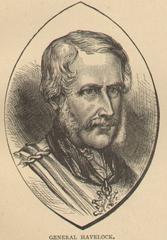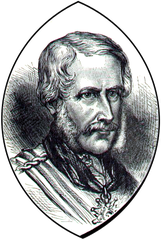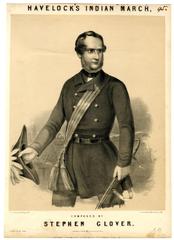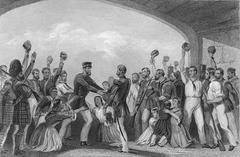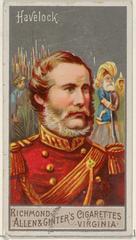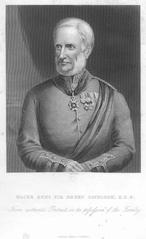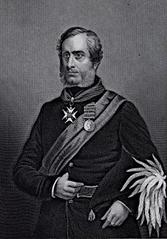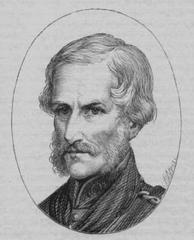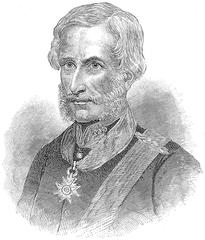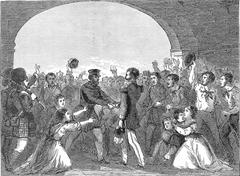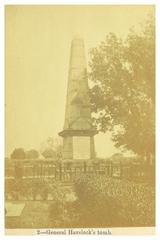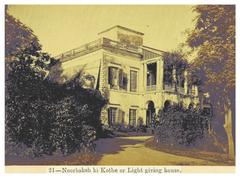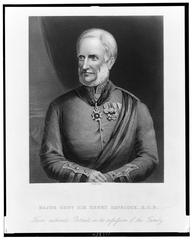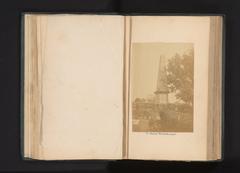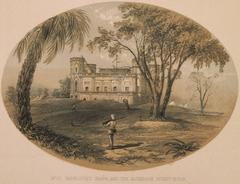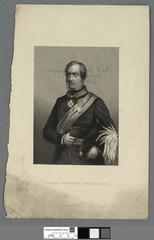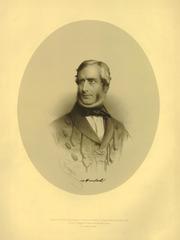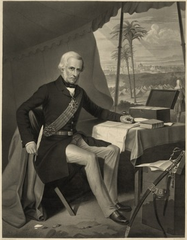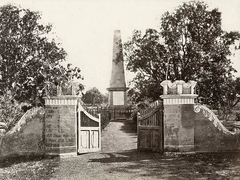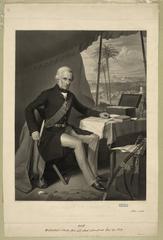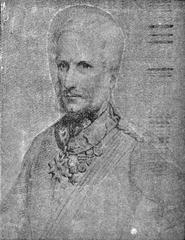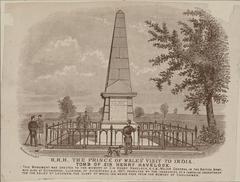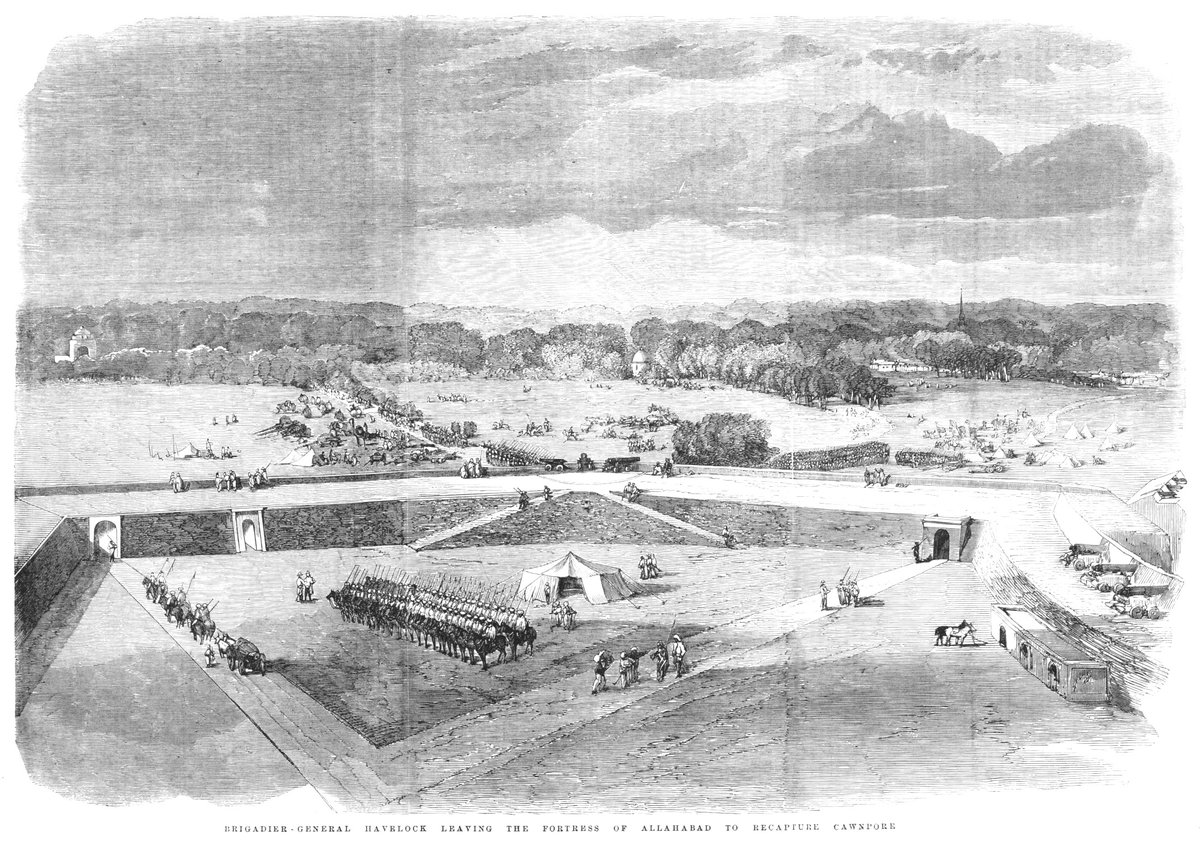
Statue of Henry Havelock, London: Visiting Hours, Tickets, and Travel Guide
Date: 15/06/2025
Introduction
Situated in the heart of London’s Trafalgar Square, the Statue of Major General Sir Henry Havelock stands as a testament to 19th-century British military history and evolving public memory of the empire. Sculpted by William Behnes and erected in 1861, the bronze statue honors Havelock’s leadership during the Indian Rebellion of 1857, particularly his role in the relief of Cawnpore and Lucknow. Today, the statue is not only a visual landmark but also a focal point for discussions about Britain’s imperial legacy and changing attitudes toward public monuments. This comprehensive guide explores Havelock’s life, the statue’s artistic and historical significance, practical visitor information, and the ongoing debates that surround this and other imperial monuments in London. For further reading, see Wikipedia and Inspiring City.
Table of Contents
- Historical Background of Henry Havelock
- The Statue in Trafalgar Square: Artistic and Historical Overview
- Visiting Information: Hours, Tickets, Accessibility, and Travel Tips
- Controversies and Changing Perspectives
- FAQs
- Conclusion
- References and Further Reading
Historical Background of Henry Havelock
Early Life and Military Career
Born on April 5, 1795, in Bishopwearmouth (now Sunderland), England, Henry Havelock was the second son of a prosperous shipbuilder. Educated at Dartford Grammar School and Charterhouse School, Havelock originally intended to study law but pursued a military career due to family financial difficulties. Commissioned as a second lieutenant in 1815, he developed a keen interest in military history and tactics.
Service in India and Religious Convictions
Havelock’s reputation was forged during his service in India, notably in the First Anglo-Burmese War (1824–1826). A committed evangelical Christian, he was renowned for his personal discipline and concern for the welfare of his troops. His faith shaped his leadership style, with regular Bible classes and prayer meetings boosting morale during campaigns.
The Indian Rebellion of 1857
Havelock’s leadership during the Indian Rebellion of 1857 was pivotal. As a major-general, he led the relief of besieged British garrisons at Cawnpore and Lucknow, earning national acclaim and a knighthood. He died shortly after the siege of Lucknow was lifted, but his legacy was immortalized through widespread public commemoration.
The Statue in Trafalgar Square: Artistic and Historical Overview
Artistic Design and Creation
- Sculptor: William Behnes, a prominent Victorian-era sculptor, designed the statue, which was among the first to use photographic references for greater realism (Wikipedia).
- Materials and Pose: Cast in bronze and set on a granite plinth, Havelock is depicted in military uniform with a cloak, left hand resting on a grounded sword, and right hand holding his belt—a stance symbolizing authority and composure (Inspiring City).
- Location: The statue occupies the south-eastern plinth of Trafalgar Square, strategically placed near Nelson’s Column and the statue of General Sir Charles James Napier to signify national military valor (Art UK).
Historical Context and Reception
- Victorian Commemoration: Funded by public subscription, the statue reflected Victorian ideals of duty, courage, and imperial service. A copy stands in Sunderland, Havelock’s birthplace (Wikipedia).
- Critical Reception: While popular at the time, the statue was not universally admired. The Art Journal (1862) criticized it as “perhaps the worst piece of sculpture in England” (Inspiring City).
- Heritage Status: The statue became a Grade II listed building in 1970, with Trafalgar Square itself holding Grade I status (Wikipedia).
Visiting Information: Hours, Tickets, Accessibility, and Travel Tips
Visiting Hours and Tickets
- Access: Trafalgar Square is a public open space, accessible 24/7 with no entry fee.
- Best Time to Visit: Daytime hours are recommended for the best visibility and safety.
Accessibility
- Wheelchair Access: The square is wheelchair accessible with ramps and smooth pathways.
- Public Transport: The nearest London Underground stations are Charing Cross and Leicester Square.
Getting There
- By Tube: Charing Cross (Northern, Bakerloo lines); Leicester Square (Northern, Piccadilly lines).
- By Bus: Several major bus routes stop at or near Trafalgar Square.
- On Foot: Trafalgar Square is within walking distance from Covent Garden, Piccadilly Circus, and Westminster.
Nearby Attractions
- The National Gallery: Renowned collection of European paintings.
- Nelson’s Column: Central monument to Admiral Horatio Nelson.
- Fourth Plinth: Rotating contemporary art installations (Art UK).
- St Martin-in-the-Fields: Historic church and concert venue.
- Leicester Square & Covent Garden: Entertainment, dining, and theater districts.
Travel Tips
- Crowds: Visit in the early morning or on weekdays for a quieter experience.
- Guided Tours: Many walking tours include Trafalgar Square and its statues; audio guides and mobile apps like Audiala enhance the experience.
Controversies and Changing Perspectives
Victorian Values and Imperial Legacy
The Havelock statue originally served as an uncontroversial tribute to a military hero, embodying Victorian ideals of national pride and imperial dominance (theses.ncl.ac.uk).
Contemporary Critiques and Public Debate
In the 21st century, the monument’s legacy is under renewed scrutiny. The Indian Rebellion is increasingly viewed through the lens of colonial violence, and Havelock’s role is debated. In the wake of nationwide conversations about statues and colonial memory—especially after the removal of the Edward Colston statue—calls have emerged to contextualize rather than remove the Havelock statue. London’s commission on statues recommends plaques and interpretive materials to inform the public about complex legacies (news.sky.com).
FAQs
Where is the Henry Havelock statue located?
South-eastern plinth of Trafalgar Square, London.
What are the visiting hours?
Open 24/7, year-round.
Is there an entry fee?
No, the statue and square are free to visit.
Is the statue accessible to those with disabilities?
Yes, Trafalgar Square is wheelchair accessible.
Are guided tours available?
Yes, many walking tours include the statue; audio guides and mobile apps are also available.
What other statues are nearby?
Statues of General Sir Charles James Napier, King George IV, and Nelson’s Column.
Conclusion
The Statue of Henry Havelock in Trafalgar Square provides a window into Britain’s Victorian past and its complex imperial legacy. As a freely accessible public monument, it invites visitors to reflect on the narratives of heroism and empire, the artistry of Victorian sculpture, and ongoing debates about representation and memory in public spaces. Enhance your visit by exploring nearby attractions, joining guided tours, and considering the broader context of London’s monuments. Stay informed about events and discussions by downloading the Audiala app and following related social media channels.
References and Further Reading
- Statue of Henry Havelock, Trafalgar Square, Wikipedia
- The Statues of Trafalgar Square in London, Inspiring City
- London’s Statues Celebrate Britain’s Colonisation of India, The New Arab
- Sky News Research on Controversial Statues, Sky News
- The Fourth Plinth in Trafalgar Square, Art UK
- Who is Henry Havelock? Sunderland Echo
- London Remembers: Havelock Statue
- Theses on Victorian Statues, Newcastle University
- Urban Design Lab: Trafalgar Square
- London33: Trafalgar Square
- Tripspell: Trafalgar Square
- PlanetWare: Trafalgar Square
- Springer: Victorian Statues and Public Memory
